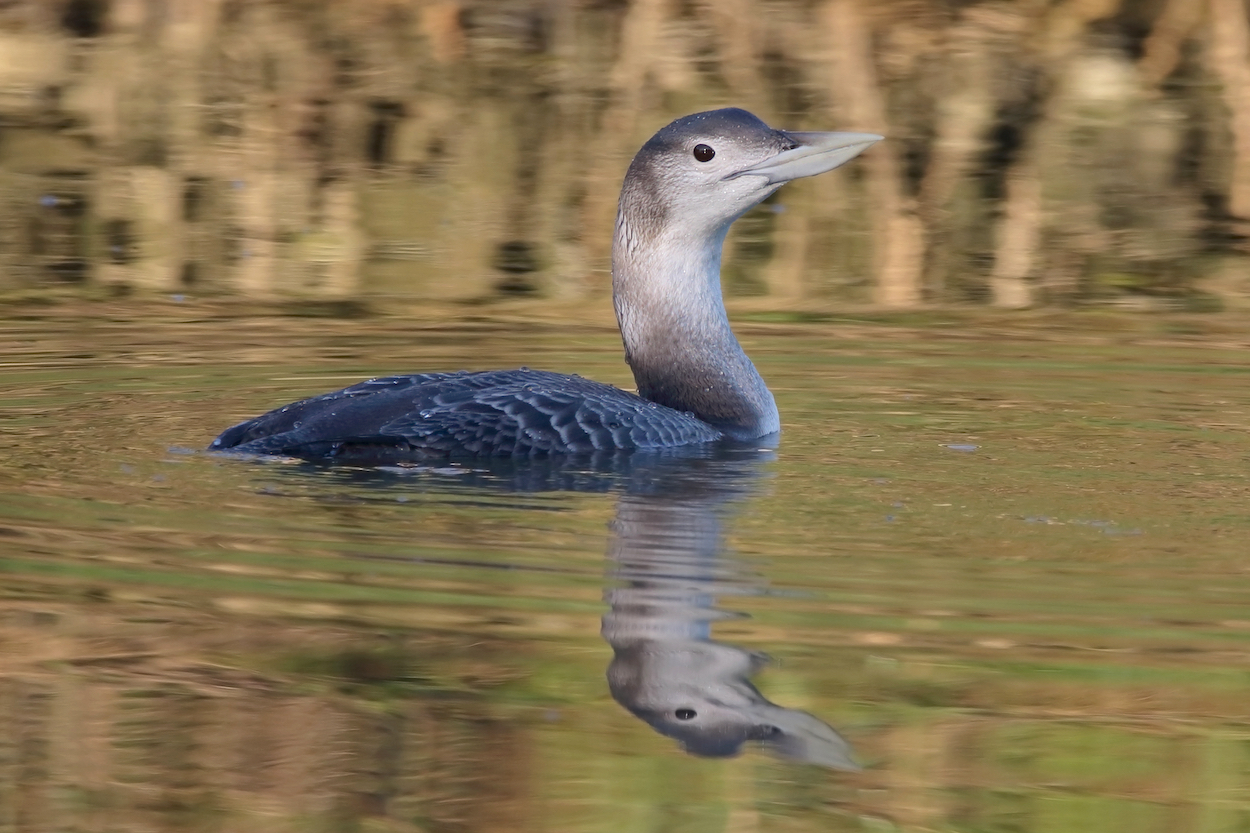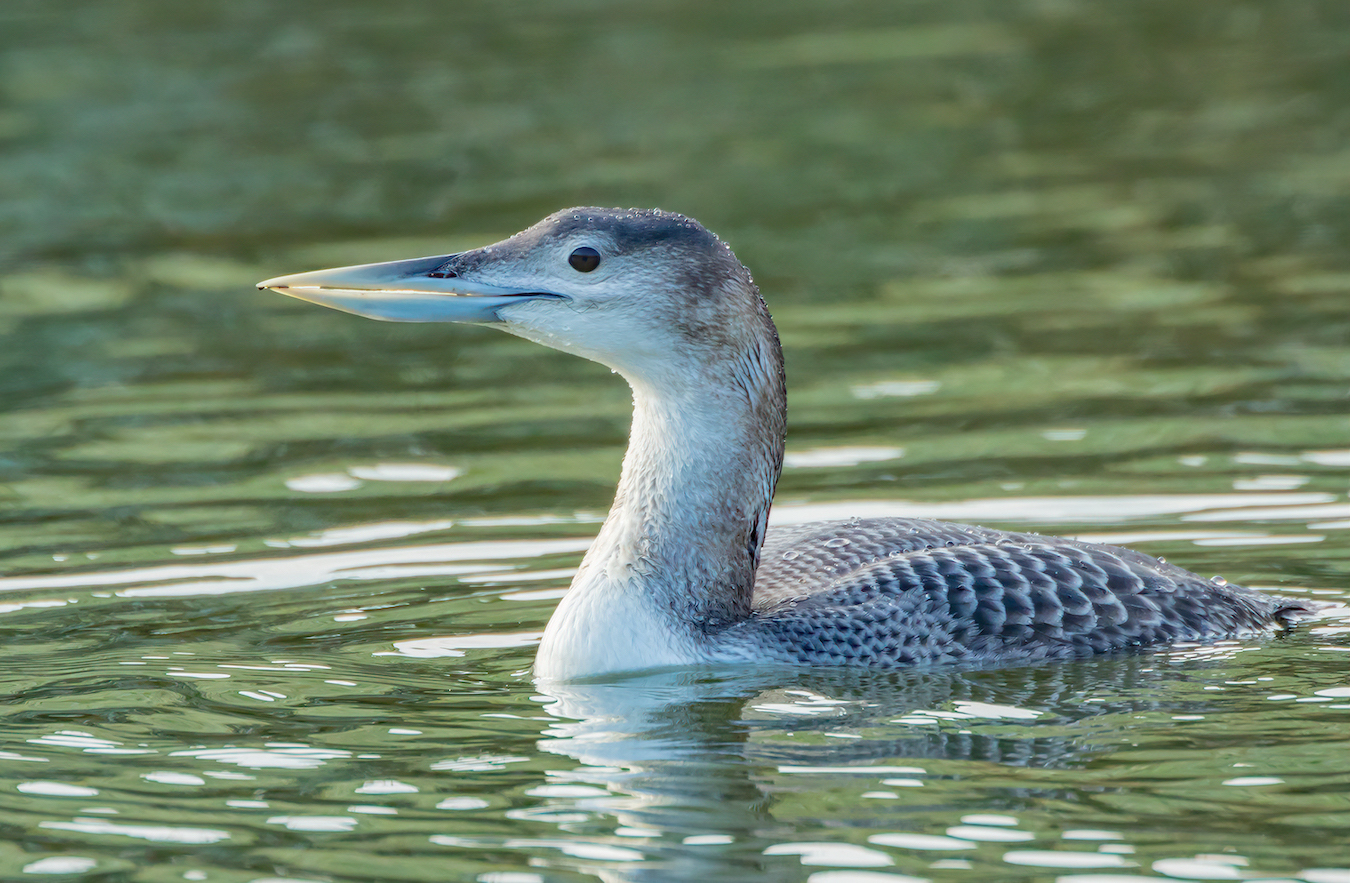White-billed Diver Gavia adamsii


2CY White-billed Diver, Gavia adamsii at Kirkstead Bridge (top) and at Stixwould (bottom) on the River Witham
January 22nd 2017; top photograph Neil Smith, bottom photograph Mark Johnson.
After the first record of a dead bird at Friskney Marsh on March 26th 1976, the second record was some twenty years later on February 29th 1996, serendipitously found on the River Witham at Tattershall Bridge. This bird was taken into care on March 2nd, having swallowed an angler's pike bait. Unfortunately it could not be saved and the specimen is in the British Museum in Tring. At that time, this was only the second British record of a White-billed Diver away from the coast, the other being of an adult bird present at Audenshaw Reservoirs, Greater Manchester, on December 7th-8th 1987. Remarkably, on January 20th 2017 a local angler informed Gibraltar Point reserve manager Kevin Wilson that he thought he had seen a White-billed Diver ... on the river Witham at Kirkstead Bridge! The identity was soon confirmed as a 2CY bird and third county record. It was seen by many observers and stayed on this stretch of the Witham until February 1st when it flew off south along the River Witham in the direction of Tattershall Bridge, the site of the 1996 bird.
White-billed Divers breed within a relatively narrow band about 1000km wide, lying mainly north of the Arctic Circle, extending from the Varanger Fjord, in northern Norway, eastwards to the Siberian tundra, Alaska and north-west Canada. In the western Palaearctic, they winter in the east Atlantic south to southern Norway but the distribution is poorly known. White-billed Diver met the statistical criteria for removal from the list of species considered by BBRC and was dropped from the list from January 1st 2009. The vast majority occur at sea in the UK, so the fact that there have been two records in the county on the same stretch of the freshwater River Witham is astonishing.
| Site | First date | Last date | Count | Notes |
| Friskney Marsh | 26/03/1976 | - | 1 | An adult found dead on the tideline |
| R. Witham, Tattershall Bridge | 29/02/1996 | 02/03/1996 | 1 | Adult |
| R. Witham, Tattershall Bridge | 20/01/2017 | 01/02/2017 | 1 | 2CY |
| Freiston Shore | 22/05/2018 | - | 1 | An adult found dead on the tideline |
| Gibraltar Point NNR | 09/12/2021 | - | 1 | On the sea off Mill Hill, then flew into The Wash |
Finder's report - White-billed Diver at Tattershall, February 29th, 1996: first county record of a live bird !
by Kevin Durose
On February 29th I decided to visit Tattershall and Kirkby Pits. The day was sunny and mild and at the last moment I opted to make a slight detour where the road runs alongside the river Witham for several miles. At around mid-day, about a mile before reaching Tattershall Bridge, I noticed a large diver underneath the nearside bank about 10 metres below the car. I immediately had a closer look through my binoculars, since the bird appeared to be a White-billed Diver. I could not believe my eyes – a White-billed Diver in Lincolnshire! I took notes and observed the bird for about an hour.
The bird was associating with a Black-throated Diver, and I also realised that I had driven past two Slavonian Grebes about 200m upriver. After finishing my notes, I telephoned Birdline Northeast, then went back to enjoy the bird. Unfortunately, the bird died two days later, after being caught by a pike fisherman. This is the second Lincolnshire record, following one found dead in March 1976.
Description
Head: paler than Great Northern Diver, pale around the eye and also a pale area on the ear coverts. Generally darkish brown on the crown and down the back of the neck, gradually becoming paler towards the dirty white throat. Head and neck were paler than the upperparts, clearly contrasting with them.
Upperparts: generally darkish brown. Several white spots were visible on the scapulars, which would confirm that the bird was in adult winter plumage.
Underparts: whitish.
Bare parts: bill completely whitish yellow with an obvious angle at the gonys on the lower mandible and usually held upturned in the manner of a Red-throated Diver. Legs greenish grey and eye brownish red.
Note: This was not the first county record, but the first to be found alive. See main account above. This species has an unfortunate record in the county with three of the four records being of either dead birds, or, like this one, succumbing shortly after being found.
(Account prepared October 2017; updated with reference to the new Birds of Lincolnshire (2021), September 2022)

